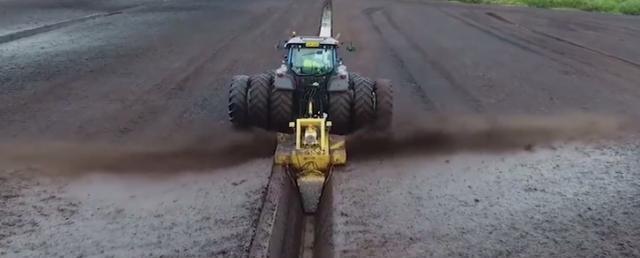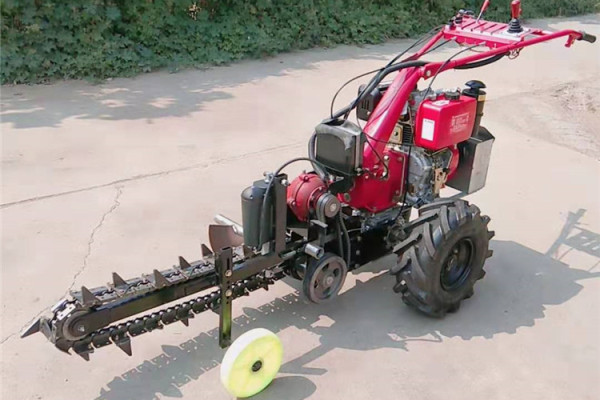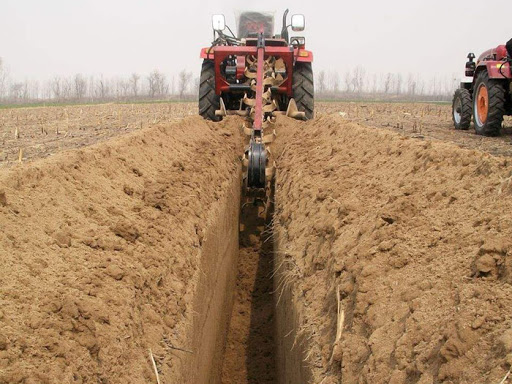Types and classifications of trenchers

Trencher is one of the main types of construction machinery. It is a trenching machine used in earthwork construction. It is widely used in farmland water conservancy construction, communication cable and oil pipeline laying, municipal construction and military engineering.
Trencher is one of the main types of construction machinery. It is a trenching machine used in earthwork construction. It is widely used in farmland water conservancy construction, communication cable and oil pipeline laying, municipal construction and military engineering. The functions of the trencher and the excavator have many similarities. Both have the functions of soil (soil or rock), soil crushing and soil borrowing. The advantages of the trencher are continuous operation, high construction efficiency, and small surface damage. It is especially suitable for laying pipelines, even in rock and other hard geological conditions, trenches with regular shapes can be excavated. Trenchers have been widely used abroad. Since the 1980s, a variety of models have been developed in China, but most of them have not been promoted.
Trencher products mainly include plow trencher, jet trencher, mechanical trencher, fiber optic trencher, and large trencher.
The plough trencher is mainly composed of a main body support, a skid walking mechanism, a coulter excavating mechanism, a tractor mechanism, an umbilical cable, a power system, a propeller, an underwater positioning and monitoring system, etc. It is a typical towed trencher. After the trencher straddles the submarine pipeline and holds the pipe, it must be dragged along the pipeline direction by the mother ship. During the dragging process, the coulter directly cuts into the soil for trenching operations, which can dig the trench neatly. The V-shaped gully does not reduce the shear strength of the adjacent soil, and the trench depth can be realized by controlling the skid. Because of its simple structure, low failure rate, fast trenching speed (generally no more than 0.5km/h for jet and mechanical trenching, and up to 3.5km/h for plough trenching), low operating costs (for jet trenching) Use 1/5~1/10), stable formation of trenches, and the ability to excavate various types of soil. In a water depth of 1000m, it is often the first choice for trenching for submarine pipelines.
The jet trencher is the earliest and simplest trencher. It has experienced the development process of manual jetting, skid type, traction type and self-propelled jet trencher. The deep-water jet trencher is mainly composed of the base ROV, jetting system, dredging system, monitoring system, etc. The high-pressure water flow of the jetting system liquefies, decomposes or cuts the seabed soil, and the dredging system sucks and discharges the excavated soil to form the pipeline burying needs The monitoring system provides lighting, camera, sonar scanning and other functions for the gully, and the base ROV is equipped with a trencher to travel, cross-pipe, etc., often called a crawling ROV. It is a medium-sized and powerful ROV. It is propelled by the ROV. In the process of trenching, it is self-navigating and is divided into crawler and skid jet trencher according to the different ways of bottom walking support. It is mainly suitable for non-cohesive soils such as sand and mud and low-viscosity cohesive soils. Its digging speed is slow; but the working water is deep, and the working water depth can reach 3000m. Because it is a self-propelled trencher, it does not need to be provided by an offshore mother ship The towing force is less dependent on the power of the mother ship. It can be directly straddled on the pipeline. The risk of damage to the pipeline is small, low cost, easy to operate, and it is suitable for the excavation of pipelines and cables (power, umbilical cord, communication). Ditch work. However, its work efficiency is low and it cannot dig hard soil. Therefore, in the future, a jet trencher with high power and capable of digging hard soil will be developed.
Mechanical trencher began in the 1970s. In the early 21st century, deepwater mechanical trencher technology and equipment have been rapidly developed. They are mainly used to cut strong (such as rock) seabed soil through mechanical cutting equipment (such as Chain saws, cylindrical cutting blades, etc.) chop up the hard soil or even liquefy, and the jet system sucks and discharges the chopped soil to form the trenches required for pipeline burying. It is mainly composed of the main bracket, reamer system, jetting system, mud drainage system, Crawler, power system, monitoring system, etc. The mechanical trencher combines mechanical cutting and jet cutting or dredging, and can be applied to any soil under the sea, making up for the lack of jet trenchers that cannot cut hard soils and the plough trencher requires high-horsepower mother ship towing. There are many deep-water mechanical trenchers. Among them, SMD's RT-1 and T-3200, IHCEB's i-Trencher are the most advanced and mature in technology, but based on mechanical trenchers, there are complex structures, complex control systems, and high failure rates. , For reasons such as the replacement of mechanical cutting equipment, the operating water depth of the mechanical trencher does not exceed 1500 meters, and the development of high efficiency, low failure rate, low operation and maintenance cost and deep water serialization is still to be achieved.
The optical cable trencher is developed and designed in accordance with national standards. The width can be digging 12 cm, the depth can be digging 1.4 meters, and the speed can reach about 600 meters per hour. The machine has high efficiency and low cost, and the consumption per meter does not exceed 0.5. yuan. Its special chain knife can be constructed in winter and can dig frozen soil.
Large trencher, trenching with backfill, one machine for dual purposes, the trench width is between 60 cm and 1 m, and the depth is between 1.4 and 2 m. It is a chain knife specially made for the large trencher. It can dig frozen soil in winter. Its horsepower is large, double-row chains, the ditching speed is about 180-300 meters per hour, and its consumption per meter is between 0.6 and 1 yuan. Can be used for: tap water pipeline trenching, road trenching machine, slotting machine, road trenching machine, tractor-to-ditching machine, various trenching machines, cable trenching machine, water pipe trenching machine, roadside stone trenching machine Ditch machine.
所有评论仅代表网友意见
